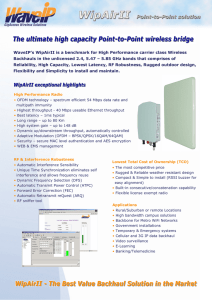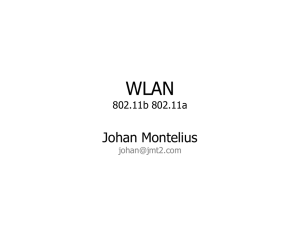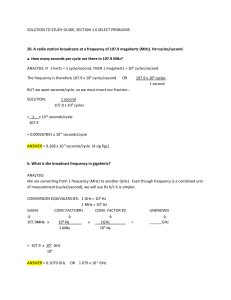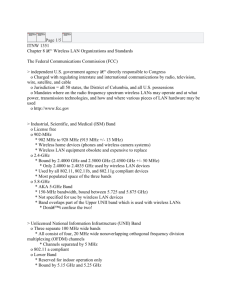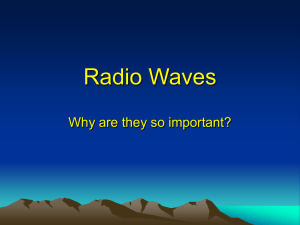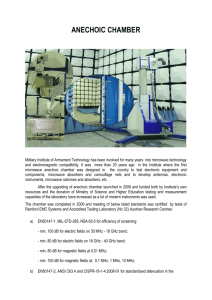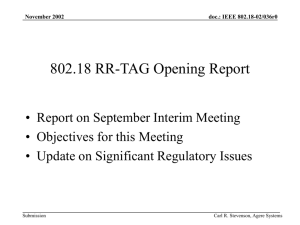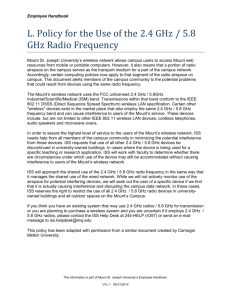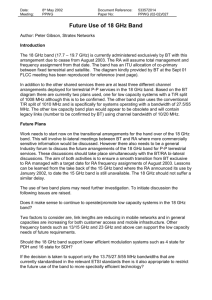CCNA3 Chapter 7 - STP
advertisement
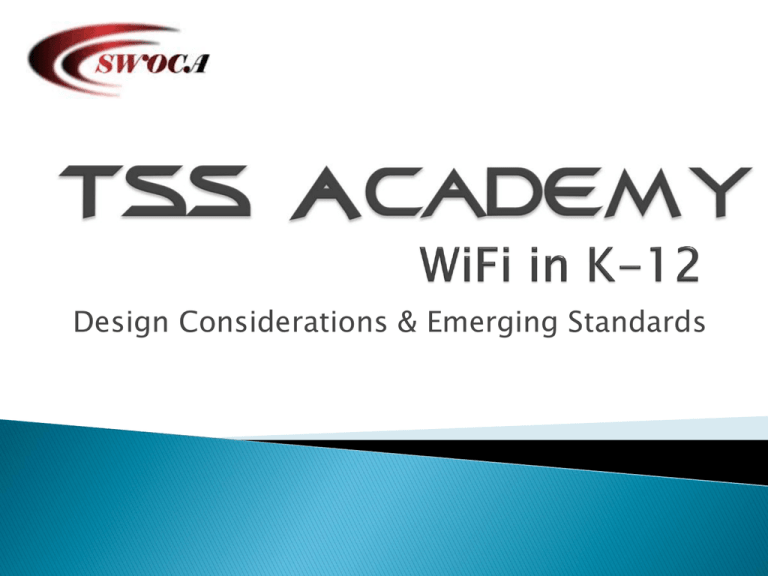
Design Considerations & Emerging Standards Carrier Sense Multiple Access / Collision Detect. Practical limit on 802.3 Nodes per collision domain Listen before you talk. All stations share (access) the common media. Each station must wait at least 9.6 microseconds between packets ◦ InterPacket Gap (IPG) ◦ Allows receiver to process packet ◦ Also allows everyone a chance to use the medium. The first station to detect a collision sends a 32 bit ‘Jam’ signal. ◦ All stations stop sending for at least 9.6 microseconds The two stations that caused the collision then calculate a “Backoff Period” Before retrying. There are a certain number of availble values for the random backoff period. Once networks get to about 30 devices, the backoff periods become congested. CSMA/CD Send and Receive share the same bus Half Duplex Collision Domain Switches Required Switches create 2 virtual bus’s per connection 802.11 is Half Duplex ◦ Tx and Rx uses SAME space ◦ A radio can not Transmit and Receive Simultaneously. ◦ Therefore, Collision Detection is not an option. Waits for each frame to be ACKd If ACK not received, Collusion Assumed ◦ Takes LONGER then CD. ◦ More devices -> More Collisions -> More Wait Time Back to the rules of Shared Media Each section of air is Shared Media Each Channel is a segment (at a certain point.) Radio Frequency 2.6 Ghz, 5.2 Ghz Knows no boundaries Unprotected from outside signals Distance Sensitive ◦ Law of Inverse Square Regulated differently in each country. More power = More Distance. ◦ Sorta. LOTS of interference ◦ Devices operating in the 2.4 GHz range include: Microwave ovens. Bluetooth devices. Baby monitors. Cordless telephones. Building Security Systems NO Overlap between Channels 1, 6, and 11. All other channels, to bad! Relatively unused. Less Interference. More Available Channels Shorter Wavelength = ½ theoretical coverage Absorbed more readily by solid objects. Pros ◦ More Bandwidth ◦ More Channels ◦ Less Interference Cons ◦ Less Coverage Area ◦ Lower Penetration The Drawbacks” of 5 Ghz actually HELP K-12 Uses Different Frequency Hopping to pack more of the RF Space. Therefore, the faster the network, the more “attack surface” for interference it has. 802.11a 802.11b 802.11g 802.11n up to 54 Mbps in 5 Ghz Band up to 11 Mbps in 2.4 Ghz Band. up to 54 Mbps in 2.4 Ghz Band. up to 600 Mbps via MIMO ◦ Technically supported in 2.4 GHZ. 802.11ac MultiGbps via MU-MIMO 802.11n ◦ 20 Mhz Channels X 3 Streams = 300 MB ◦ 40 Mhz Channels X 3 Streams = 600 MB 802.11ac ◦ 80 Mhz Channels x 4 streams = 1.7 Gb ◦ 160 Mhz Channels X 8 Streams = 6.9 Gb (No chipsets yet bond 160Mhz) Room 106 Room 108 IEEE 802.11 RTS/CTS mechanism helps to solve this problem only if the nodes are synchronized and packet sizes and data rates are the same for both the transmitting nodes. When a node hears an RTS from a neighboring node, but not the corresponding CTS, that node can deduce that it is an exposed node and is permitted to transmit to other neighboring nodes Limit Association Rates Try for uniform Device Radio Types http://www.nojitter.com/post/240000795/rfinterference-when-things-go-bump-in-theair Bluetooth hops across the 2.4 GHz 1,600 times a second, Interference – What’s already there? Building Construction – Brick Walls? Area to Cover Type of service ◦ (VoIP/Wifi?) Number of potential Clients Total Bandwidth required ◦ ◦ ◦ ◦ 5 GHZ Devices 802.11n or 802.11ac One AP : Traditional classroom One AP : 30 Students 802.1x authentication on WiFi Limiting “casual” associations Dual Band Devices ◦ 802.11 abgn ◦ List “preferred” devices with abgn support
